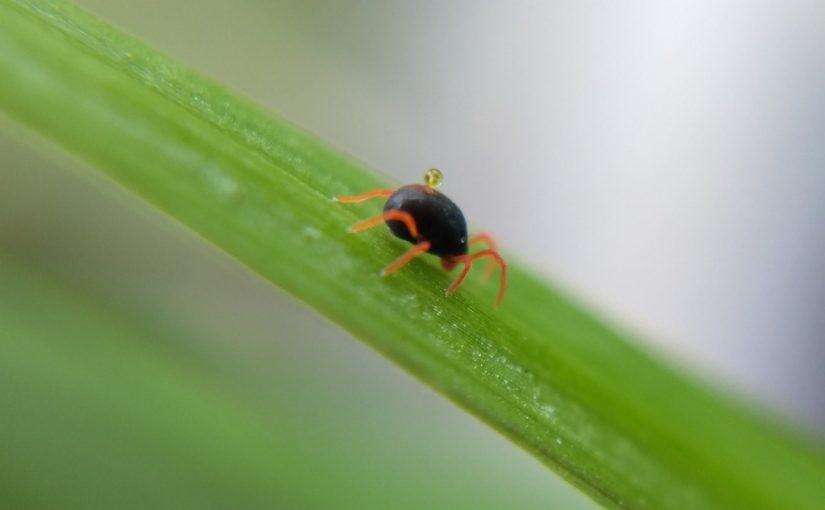It recently occurred to me that I first got into spiders around 2013 or 2014, which means that, unbelievably, I have been spidering for ten years. I mostly go to the same sites and recognize most of the spiders and mites I see, so I have gotten more interested in observing their behaviour rather than trying to identify them. But every now and then I do come across some that are totally new to me, or ones that I only see rarely. Here’s some of the “lifers” and rarities I’ve come across this year so far, with links to the corresponding iNaturalist observations.
Trombidium
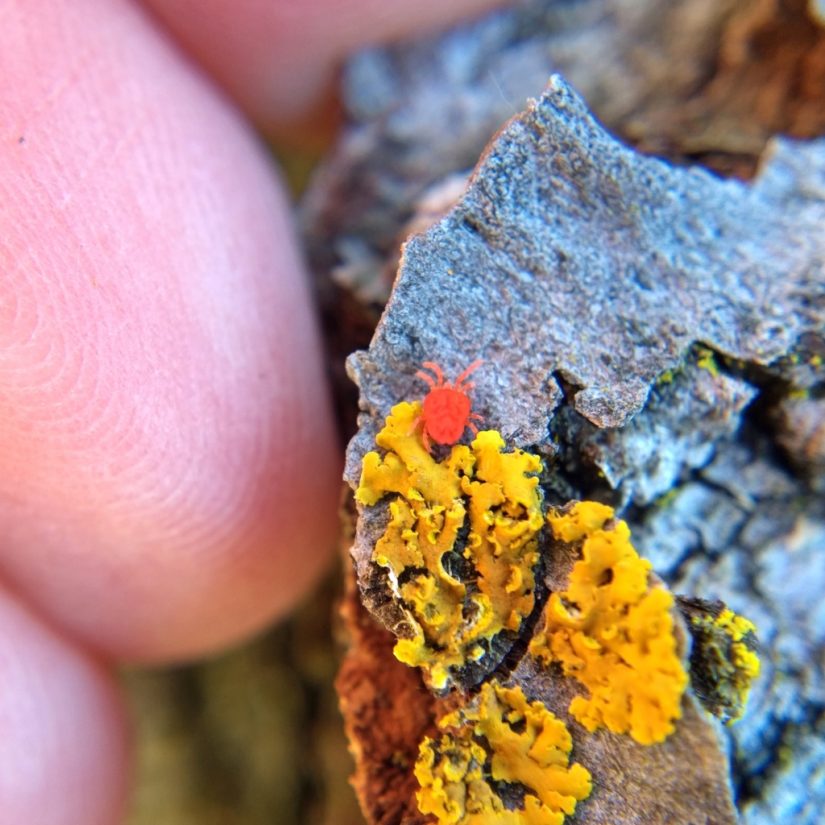
For a long time I was uncertain about how to tell the red velvet mites Allothrombium and Trombidium apart. It didn’t help that all the red velvet mites I’d ever found seemed to be Allothrombium. Then one day in High Park I saw a red velvet mite that was distinctly different: bright red in a way most Allothrombium aren’t, and shaped more like a wide strawberry than a peanut, if that makes sense, with a more flat-ended butt. Yes, I’d finally found Trombidium! They must be much less common, but now I definitely know they’re out there.
Eclipse mites
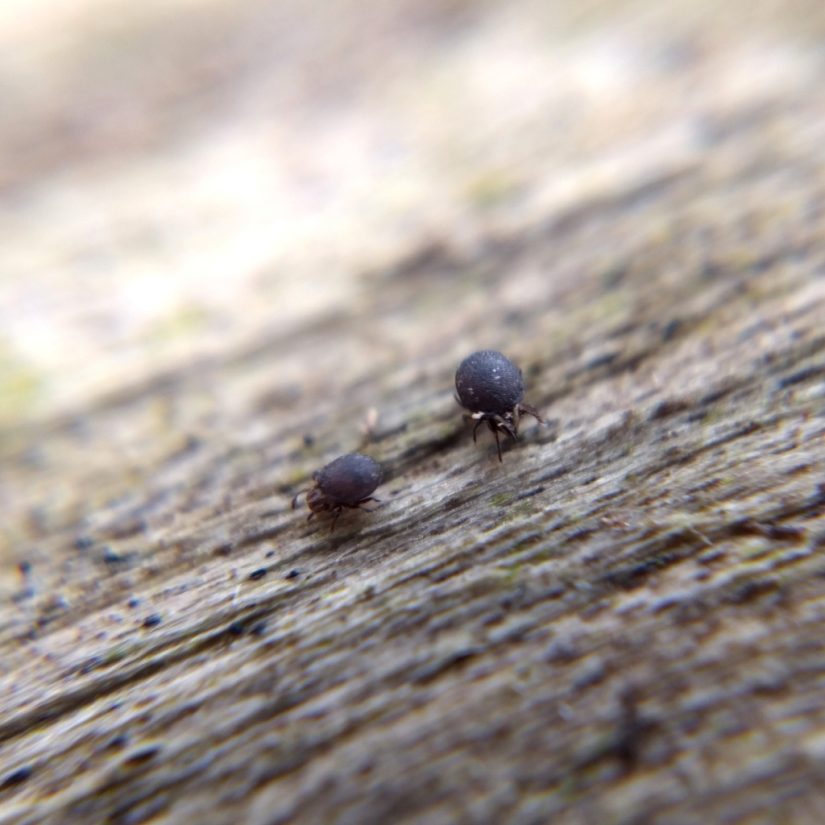
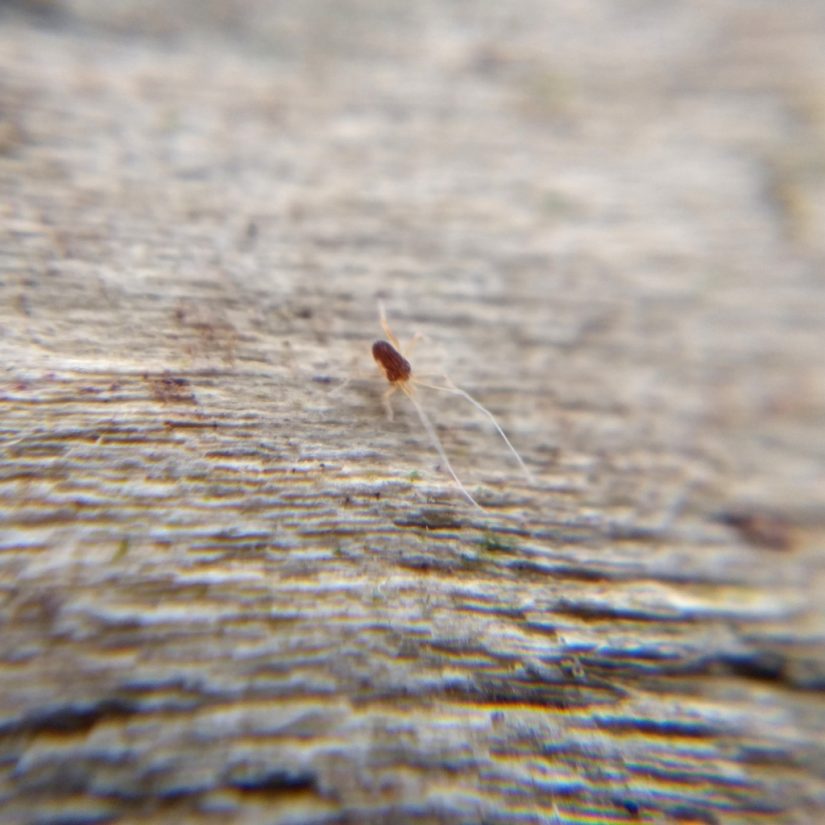
At the last minute, I decided to go to Hamilton to see the April 8 solar eclipse. It was a great decision. I ended up at a waterfront park in a marshy patch of woods that was almost empty. Everything was covered with mud and it was clear the area was periodically flooded. I had time to kill before the eclipse started, so I started poking around for arachnids. Under a piece of damp driftwood I found the most interesting-looking oribatid mites, not the small shiny poppyseed-like ones I normally find, but larger matte grey ones with more sticky-outy bits (technical term). They reminded me a lot of the globular springtail Bourletiella hortensis.
I also saw a tiny fast-whirling asterisk of a mite that, on looking at the photos, turned out to be Linopodes with those long, skinny front legs. These trombidiform mites belong to the family Cocceupodidae.
Penthaleidae (Penthaleus?)
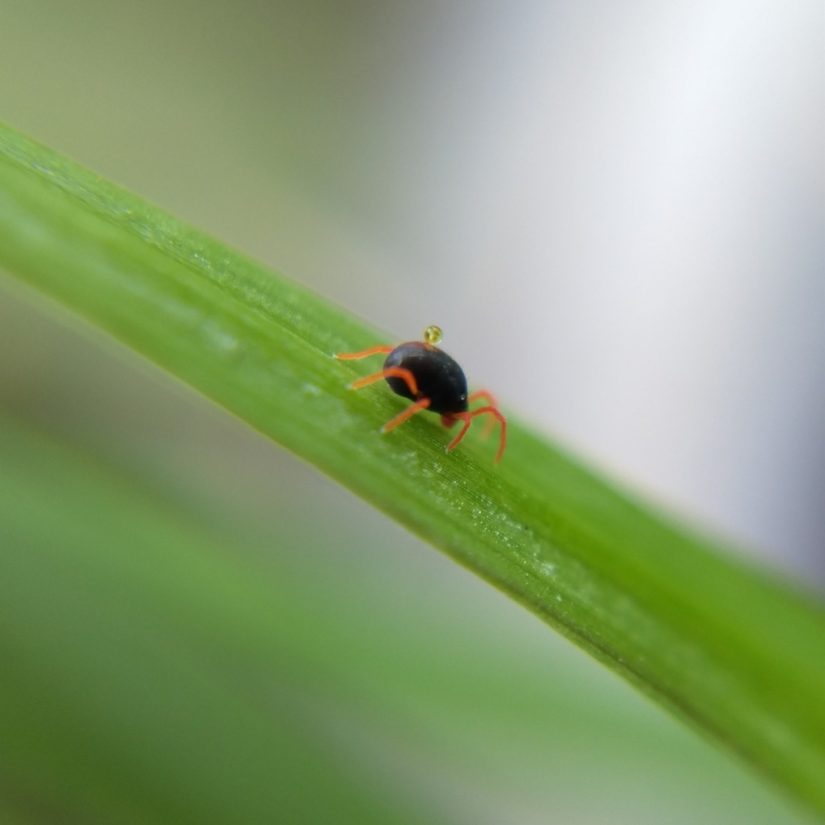
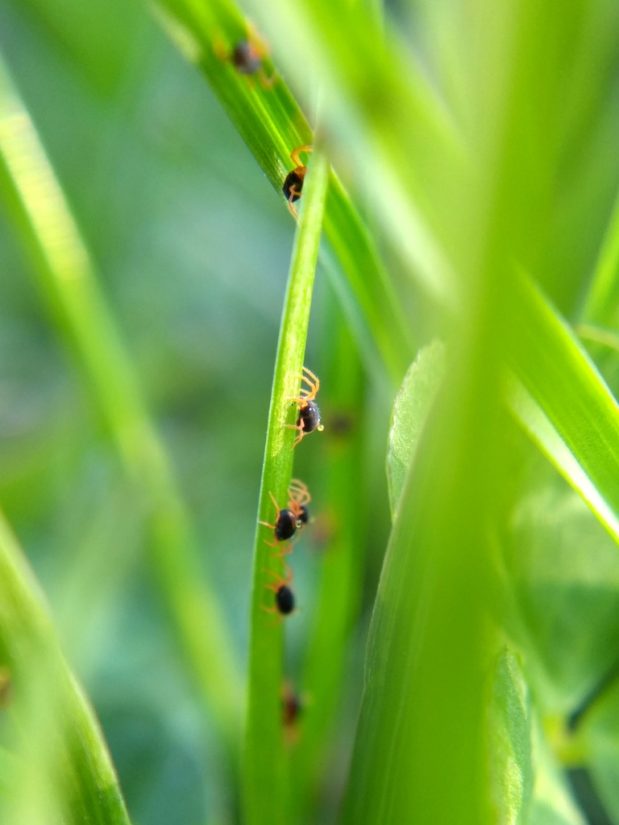
I’d seen a few of these mites before. They’re eye-catching—glossy dark blue with bright red legs and mouthparts. But what’s especially interesting is that they have a dorsal anus, a pore on their back that exudes clearish excretions. They must spend a lot of time on the underside of plants. Until now, I’d only found the odd one sheltering under bark in the wintertime. However, early this spring I discovered that I could find them in huge numbers in the dandelions and longer grass in that patch with the willows between the Palais Royale and the Boulevard Club; and I think they leave scorched-looking markings on the leaves and blades of grass they feed on. It’s hard to get pictures of them, because they hastily flee when their leaf is disturbed, but with so many at hand all you need is patience and good lighting.
Also, every now and then passersby will ask me what I’m looking at, and I have definitely gone on about dorsal anuses to complete strangers a few times this year already. Hashtag #DorsalAnus.
Admestina
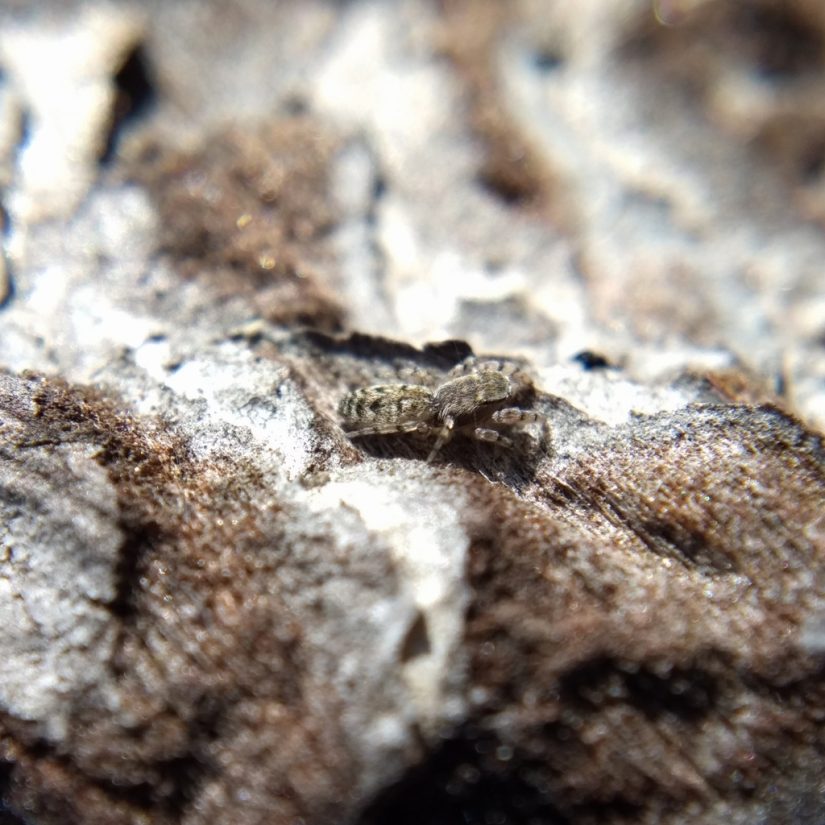
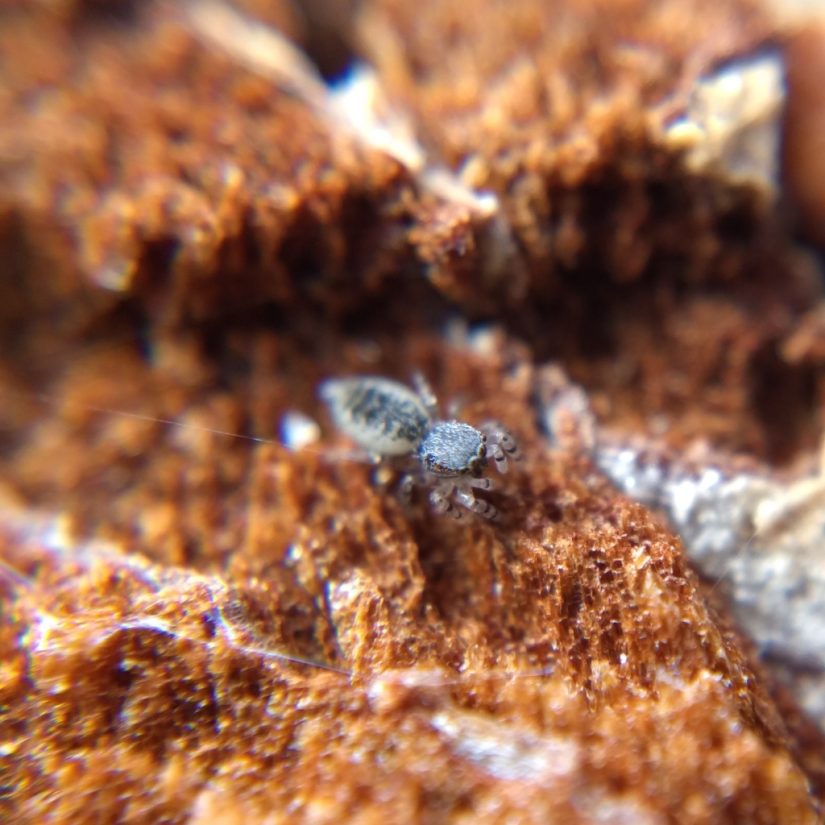
When I saw the first one, on a tree in Marilyn Bell Park, I thought it was Tutelina harti, which I often find there; it had the same flattened, elongated kind of body. But it was much paler and had patterns on its abdomen quite unlike T. harti‘s more homogenous metallic grey-black. Some time later, in High Park, I stumbled across a pine stump covered with dispersing jumping spiders of the same type of various sizes. It turns out they were Admestina, a genus I’d never seen before!
With their flattened bodies, they must live similarly to T. harti, sheltering under bark on tree trunks. The small ones could almost be mistaken for leafhoppers due to their long, pointed shape, until you look more closely and see the two body segments and unmistakable jumping spider eyes. They also have the most adorably striped legs and pedipalps.
Attidops youngi

I found two of these on the same stump as all the Admestina. There are only ten observations of this species on iNaturalist! They’re a handsome, squat, ornate-looking jumping spider, and they don’t look like anything else around here. I could only get a picture of one; the other I accidentally spooked and it yeeted itself into the undergrowth.
Mystery Sarcoptiformes under rock
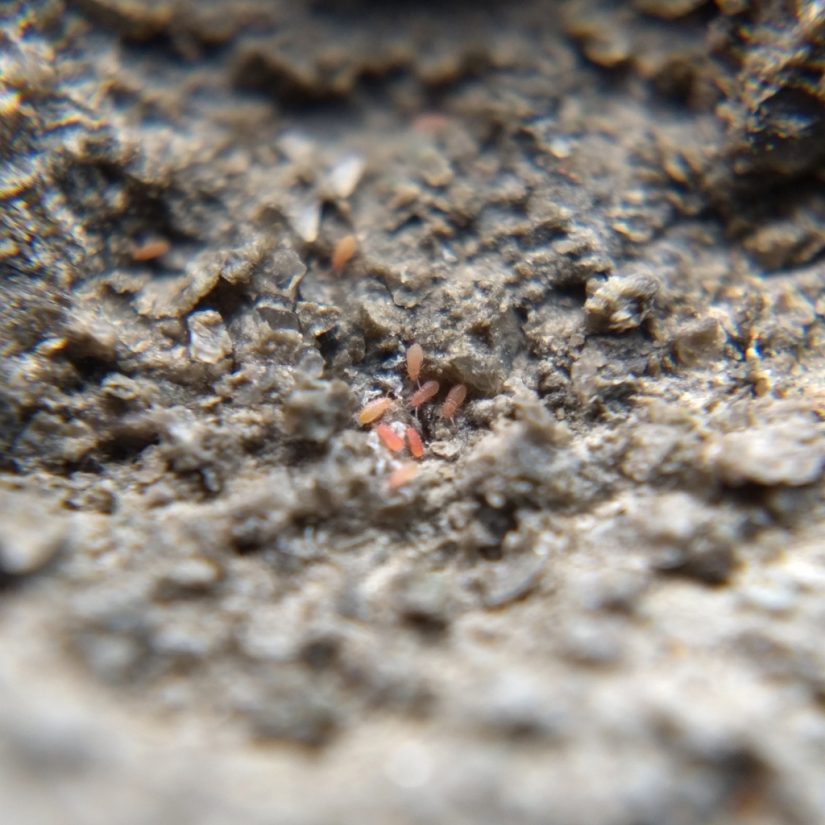
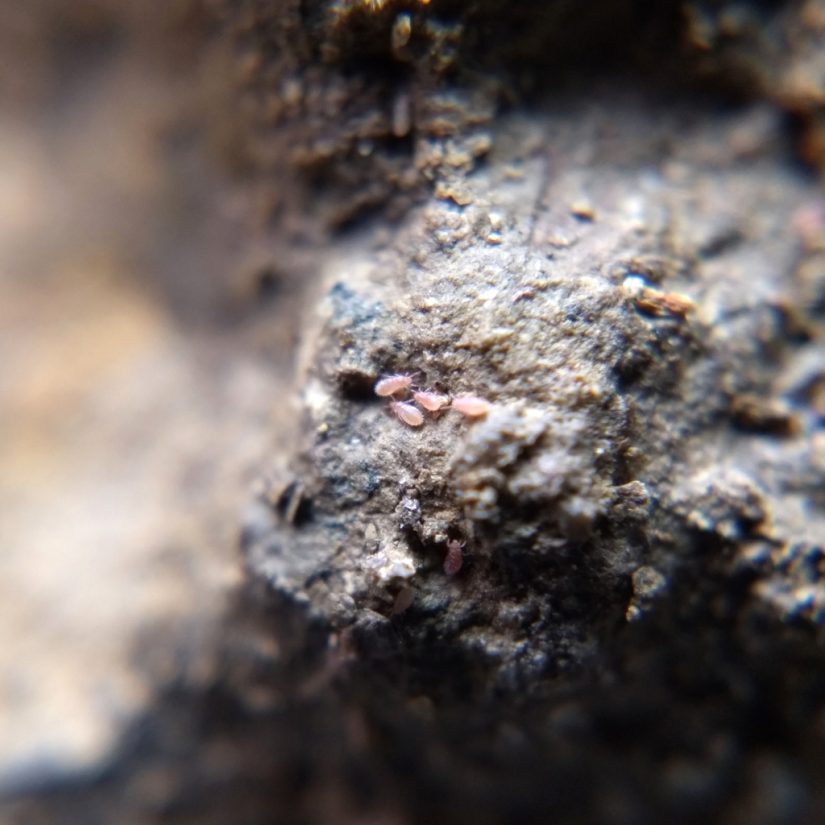
The City uses these big blocks of limestone for landscaping in parks, and prying up thin loose flakes is a good way to find mite eggs and, later in the year, mites—typically Balaustium. Recently they re-did the shoreline next to Gus Ryder Pool, which was severely eroded, replacing the slope of concrete and flat stones with tiers of limestone blocks. It’s easy to get to and perfectly designed for lots of people to sit on, unlike the previous shoreline. The rocks have yet to build up a really good bug population, but I was there prying up flakes anyway to look for early Balaustium. To my surprise I found these tiny elongated creatures in shades from light yellow to pinkish-red that at first I might have taken for tiny thrips. But on looking at them with the 24x macro lens, I saw eight legs and realized they were some kind of mite! I wondered if they were perhaps some life stage of Balaustium I hadn’t seen before, but looking up pictures in papers online didn’t turn up anything similar. On iNaturalist, Ray Fisher is stumped but suggests perhaps Paratydeidae or primitive oribatids.
These are definitely ones that would require a microscope, key, and significant expertise to ID, none of which I have, so they’ll remain a mystery for now. But I do hope to keep finding them; I wonder if they’re only around at certain times in the year, or if they get any bigger or come in different colours. Now that I know what to look for, perhaps I’ll find them under stone flakes in other areas as well. Or perhaps, like Pardosa lapidicina, they can only be found on the shoreline?
Allocosa funerea
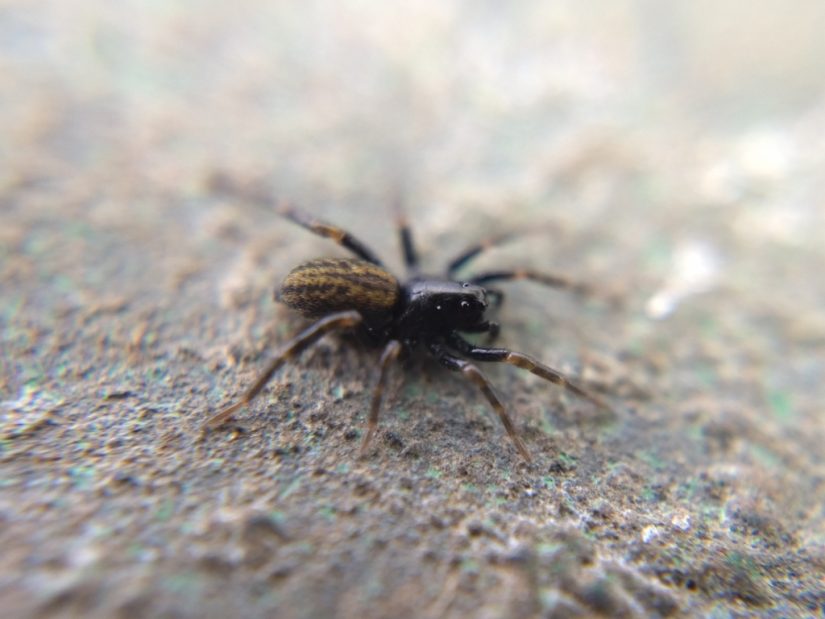
Recently the railings by the lake are frequented by tiny male dictynids of some kind running back and forth, and when I first saw this small dark spider that’s what I thought it was. But the lighter brown patterns on its abdomen were not like those dictynids at all, and when I looked at the photos afterwards I was surprised to find that the eye arrangement was unmistakably lycosid! I might have thought Pardosa moesta, a small wolf spider species with a shiny carapace and brown-patterned abdomen which I’ve found in nearby High Park, but P. moesta‘s abdomen is more speckled, and this one wasn’t particularly Pardosa-like in other respects. It turns out it belongs to a genus I haven’t found before, Allocosa.
Smarididae
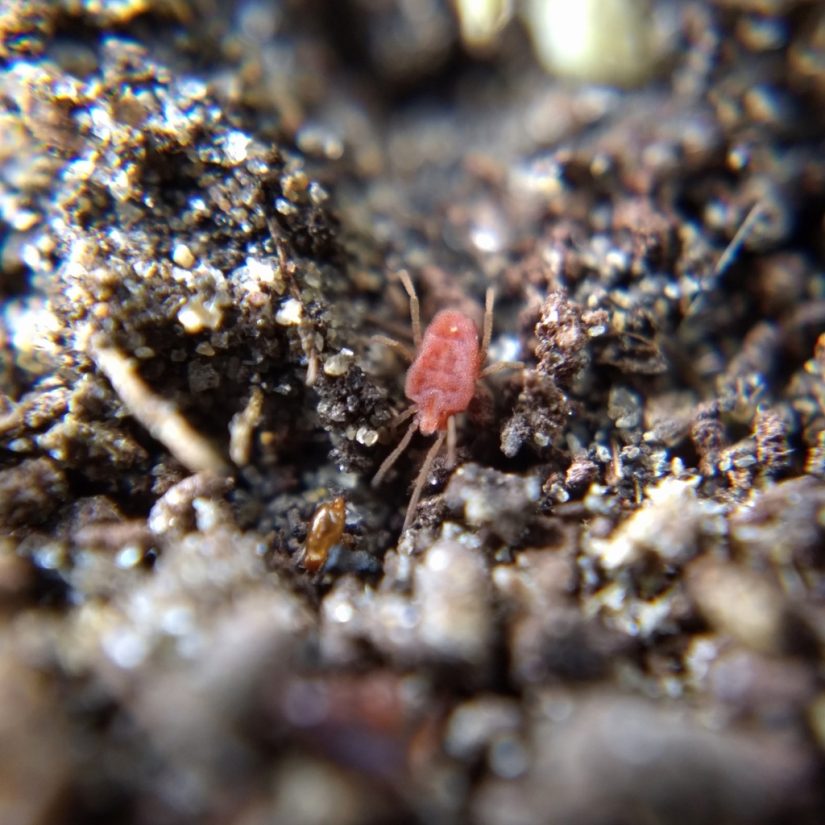
While virtually all the Parasitengona I’ve found belong to the families Erythraeidae or Trombidiidae, there are many other families in the group, and I found a mite from one of these under a dead log in High Park. It was “large” by mite standards, which means one or two mm long, clearly visible to the naked eye and able to be photographed with magnification. Like Allothrombium, it was red with a Shar Pei-like wrinkled back, and from above, it was shaped a little like Allothrombium; but it was extremely flat. Like, Allothrombium are like a dinner roll, and this was like a pancake. Its legs were also thinner and colourless, and it had a sort of pointed face, a little like one of the Callidosomatinae, a subfamily of Erythraeidae that I think I’ve found a few times. Its skin was a curious texture—not thick fur like the Trombidiidae or a light velvety coat like Balaustium, but sort of prickly- or pebbly-looking, like a mock strawberry (Potentilla indica) or one of those sour candies that’s rolled in sugar.
This makes me hopeful that eventually I will find more families of Parasitengona! I would love to find a water mite (Hydrachnidia).
And those are the highlights so far! Things are really just getting started—I’ve only started seeing the first Zygiella spiderlings, and Balaustium and Anystis mites have just begun to appear—so expect much more in the next few months. If you’re on iNaturalist, you can follow my account to keep up with my latest observations.
